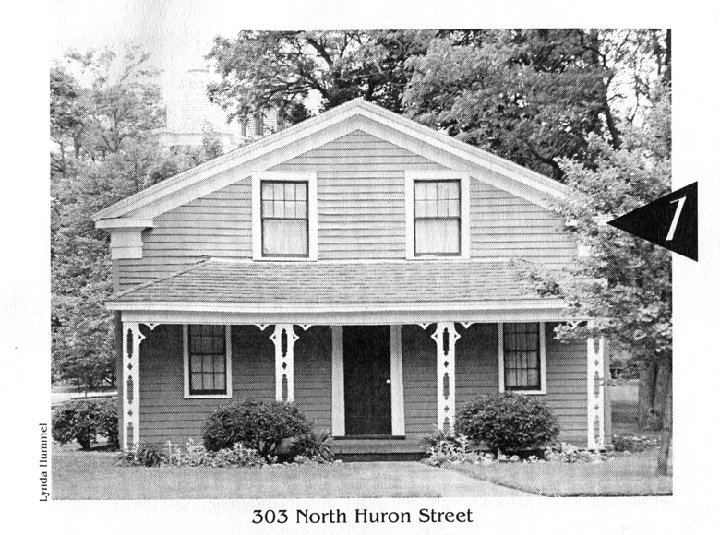Towner House, 2015
Ypsilanti Home Tour Brochure


The Towner House was built by Marcus Lane in 1837 in a vernacular Greek Revival style. It is a post-and-beam construction with most of the original beams still intact, and it stands on its original stone foundation.
Lane died in 1840, and in 1842 the house was sold to his brother, Charles. It then had several more owners until it was sold to Nancy Spencer Towner, widow of Ephraim Towner. Both Nancy and Ephraim had several children from previous marriages. Ephraim's youngest son, Norman Towner, married Jennette Spencer, daughter of Nancy, in May of 1854, and they moved into the home in 1858, after Nancy's death, Norman Towner became the City Clerk in 1870 and later worked as a bookkeeper, Norman and Jennette lived in the home with daughters Anna and Caroline and son Tracy. After almost 100 years of occupancy by the family, the house became known as "The Towner House." During the Towner family's residency, the house was more than doubled in size and a garage was built.
Tracy Towner was appointed to the Circuit Court as a commissioner, the youngest person to hold that position at the time. Later he became Ypsilanti's city attorney and was elected mayor in 1912. Tracy died in 1943. Neither he nor either of his sisters ever married, and the house was left to St. Luke's Episcopal Church. In 1952 the house was purchased by G. L. Stewart; he and his family lived there until 1968. It served as a rental property for four years and then was purchased by the First Presbyterian Church, which planned to raze it.
The Ypsilanti Heritage Foundation was formed to save the Towner House from demolition. A lease agreement was created in 1975 between the church and the foundation. After continuing to be a private residence, it became a Children's Museum in 1982. The museum ceased to exist in 1990, and the house fell into disrepair. By 1999, a consent agreement was reached between the City and the Church, calling for removal of all the additions in the back to the original structure and installation of a new roof. The Towner House LLC was formed as a nonprofit entity to maintain and repair the building.
The house's exterior is mostly restored, the interior is a shell, still in need of much repair work.
The slide show below will show you how The Towner House looked before all the additions were removed in 1999.